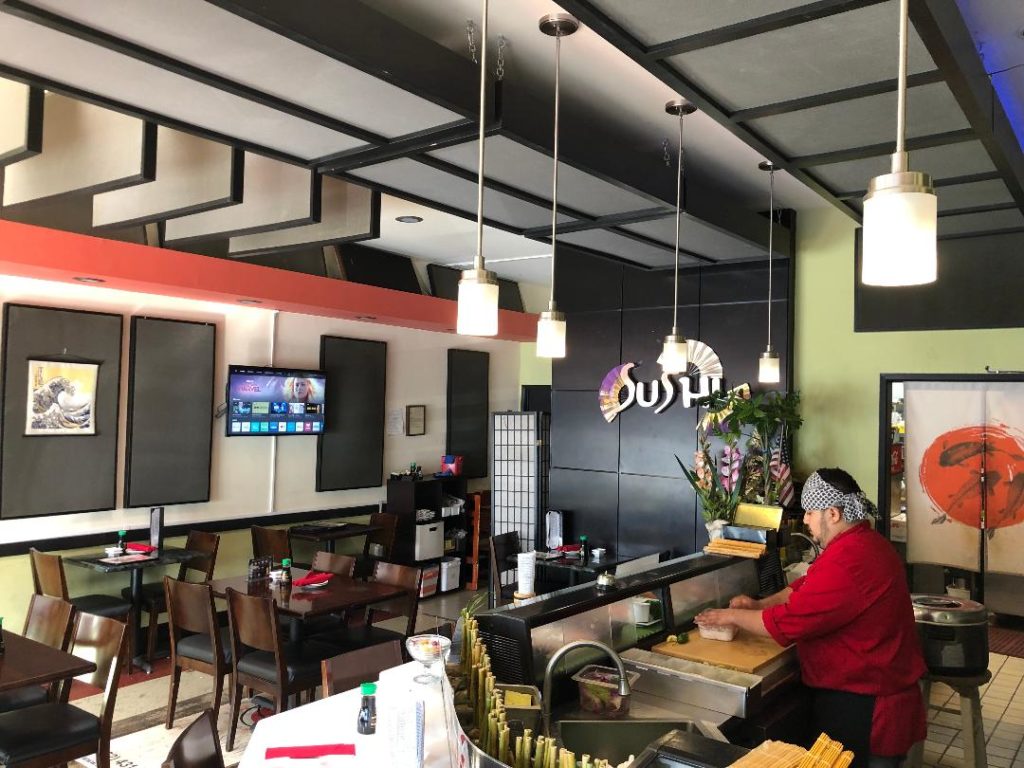
There are many answers to the question on how to hang acoustic panels. We first must look at the type of panel we will require. The panel type we select will be determined by the frequency and amplitude of our acoustical issues. If we have a low-frequency problem, we will need one type of panel. If we have a middle and high frequency issue we will use a completely different panel type. How to hang acoustic panels also depends on the room size and usage. What type of music are we playing in the room? Is it a two channel system or is it a small home theater? The usage of the room must be considered whenever we raise the question on how to hang an acoustic panel. Let’s take a look at the two main frequency and amplitude issues most small rooms exhibit regardless of the usage. Our issues in small rooms are divided into two main types of energy. We have low-frequency energy that falls below 100 Hz. and then we have middle and high frequency energy which is everything else above 100 hz.

Low frequency energy issues or “bass” as it is commonly referred to requires a panel that is deep and will weigh a lot. Middle and high frequency panels can be easily hung on the wall surfaces at certain positions and in certain amounts. Low-frequency energy requires panels that are floor standing due to their weight and size. At Acoustic Fields, we make all of our low-frequency panels on casters so they are easily positioned within any room. We also offer a system where you can avoid free standing units completely and build the technology directly into the walls themselves. Our CAW technology uses our proprietary carbon technology inside wall surfaces. https://www.acousticfields.com/carbon-absorber-wall/. For middle and high frequency issues we have many options when it comes to how to hang acoustic panels.

The most common material type to treat middle and high frequency issues is to use open celled foam. Open celled foam is specifically designed to absorb middle and high frequency energy by using a series of open cells that airborne energy can enter and then be absorbed at a specific rate and level of absorption required for music and voice. There are a lot of products in the marketplace that are just boxes filled with building insulation. Building insulation was never a material type that was designed for music and voice. It is a technology designed to keep your rooms warm and cool. Building lacks the proper rates and levels for music and voice. Music and voice are special and require that they both be treated with linear rates and levels of absorption in order to sound natural and not over-absorbed, which is the characteristic sound of panels filled with building insulation.
Our Studio Pro Foam was created specifically for music and voice. It took us over 8 years and $2M to create and has the smoothest rates and levels of absorption ever produced for music and voice. Engineers call it organic. https://www.acousticfields.com/product/acoustic-foam/. It can easily be hung from wall surface area just in its raw form. It can be easily attached to a wall surface area using a product called alien tape. https://www.homedepot.com/p/As-Seen-on-TV-Alien-Tape-10-ft-Multi-Functional-Reusable-Double-Sided-Tape-3-Pack-7087/312780371. You can also install the raw foam technology by simply using a finishing nail and inserting it through the foam and into the wall itself. You can also use a product developed by 3m which is a putty type material that attaches to the wall and the foam. https://www.3m.com/3M/en_US/stick-with-3m/mounting-attaching-optimizing-problem-solving/

To determine how many panels you will require, you must first analyze your room and then run the numbers to make sure you have enough surface area coverage to treat the issues you will be having within your room. You must first quantify and qualify the issues so you know how many panels to use and where to place them. Fill out the information in our room form. https://www.acousticfields.com/free-room-analysis/. Once you fill out the data, send it in and follow the software instructions to speak with one of our engineers to guide you through the type of acoustic panel your room will require, how many units your room will need and the proper positioning of those panels to achieve your objectives. The issue in most small rooms is one of high reverberation times. Reverberation is defined as how long a sound stays around within the room after it is played or spoken. This is produced by the reflections from the walls, floor, and ceiling. Treating reverberation is all about using the proper rate and level of absorption and having enough surface area coverage to have a positive acoustical impact.







